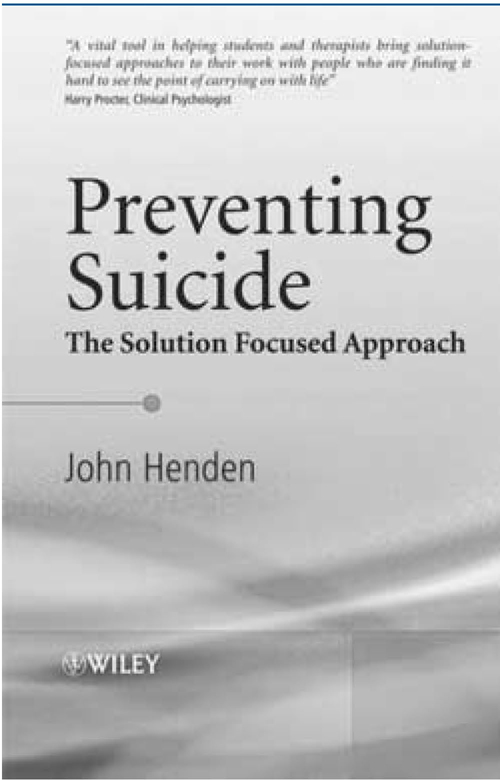
Solution-focused brief therapy (SFBT) is clearly modish. In addition to its apparent popularity, SFBT has a growing number of applications – everything from juvenile offending to orthopaedic rehabilitation and preventing suicide – a mega-trend according to the author of this book. The basic premise of SFBT is relatively straightforward – by focusing on hopes for the future, ‘solution thoughts and behaviours’ and strengths, positive change will be facilitated. Therapists in session work towards ‘problem-free talk’ eschewing the approach which is more familiar to psychiatrists centred on risk assessment and prevention of harm.
The author describes this as ‘a how-to-do book’, which is practical and emphasises ‘how-to-be’ with the suicidal person. It is written by an enthusiastic and experienced practitioner. This is both its strength and its downfall. The author's evident passion works much better where he discusses his own clinical cases and practical SFBT-based approaches such as the ‘miracle question’ and the ‘worst case scenario’. Both of these are imagery exercises. In the former the client is asked to imagine in detail how life would be different if suicidal thoughts miraculously stopped, and in the latter they are asked to imagine viewing their own funeral. Elsewhere the book lacks focus (e.g. a section on political suicide and suicide terrorism) and contains personal opinion that at times borders on propaganda and is coupled with a selective review of the literature (e.g. no mention of the National Confidential Inquiry).
Psychiatrists interested in reading this book should bear in mind that SFBT is complementary in nature, located outside conventional ‘scientific knowledge’. ‘Most studies rely on client or referrer report and have little objective validity.’ Reference Iveson1 The clinical material presented here relates to office-based practice. For example, ‘acutely’ suicidal clients can be seen in 2 or 3 days’ time having been set a pre-session task.
A word of caution. When discussing the literature the author is by turns partial and poorly-focused. At worst he is out of date and occasionally just plain wrong. He presents a number of his opinions which are both strongly-held and controversial. On the one hand is his faith in the efficacy of the worst case scenario approach that has ‘saved many lives’. On the other is his belief that by utilising strategies such as removing means of self-harm ‘a few lives are saved’ in the short term but ‘many more’ are lost in the longer term ‘due to the disempowering and devaluing effect produced by such actions’.



eLetters
No eLetters have been published for this article.